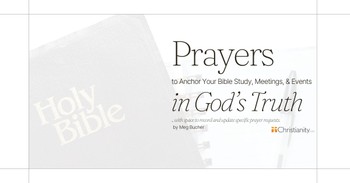“Blest Be the Tie that Binds” is a sweet hymn with an even sweeter story, especially meaningful to smaller, more modest congregations. It is a favorite for many because of its message of the bonds of Christian community. Six brief verses describe hearts bound in Christian love, deep fellowship, shared burdens and prayers, painful separations, and the blessed hope of reunification that lasts throughout eternity.
The Lyrics of “Blest Be the Tie that Binds”
1 Blest be the tie that binds
our hearts in Christian love;
the fellowship of kindred minds
is like to that above.
2 Before our Father’s throne
we pour our ardent prayers;
our fears, our hopes, our aims are one,
our comforts and our cares.
3 We share our mutual woes,
our mutual burdens bear,
and often for each other flows
the sympathizing tear.
4 When we are called to part,
it gives us inward pain;
but we shall still be joined in heart,
and hope to meet again.
5 This glorious hope revives
our courage by the way;
while each in expectation lives
and waits to see the day.
6 From sorrow, toil, and pain,
and sin, we shall be free;
and perfect love and friendship reign
through all eternity.
When Was “Blest Be The Tie that Binds” Written?
This hymn was written in England in 1782 and has since been published in more than 2100 hymnals. For over 240 years, Christians have found great meaning in these lyrics. Their message spans continents, centuries, and generations of change, testifying to the power of Christ-centered fellowship and corporate worship.
What is the Theme of this Hymn?
The theme of this song is the fellowship of Christian believers. It tells the story of being committed to one another so that our faith community provides those around us with a glimpse of heaven—“the fellowship of kindred minds is like to that above.”
In the simple, humble lyrics, there is more breadth of information about church life than the soft, sweet tune advertises. Christ binds the hearts of believers in a way that previews glory, in bonds deeper than other friendships. We pray together. We pray for one another. And our prayers and aims are centered on a common, united goal.
We care so deeply for one another that we bear each other’s burdens. When one of us hurts, we all hurt. When we are separated from each other, either on earth or by death, we have the hope of reunification either in this life or the next. This hope keeps the bonds between us unbroken.
Because of this hope, we find the courage to face whatever life brings our way as we live expectantly, knowing Jesus’ return will unify us all with Him and with one another. On that day, we will be free and together. We’ll part eternally from all sadness, unfruitful labor, pain, and sin, but our perfect love and friendship will remain with us into eternity.
Christians rejoice and find hope and courage because the bonds between believers can and will never be broken. As Roman 8 proclaims that nothing can separate us from the love of God, so we know that that same love unites us in fellowship that nothing can divide.
Who Wrote “Blest Be the Tie that Binds”
The story behind the hymn is the story of the writer, John Fawcett.
John was born on January 6, 1740, into a poor family in Yorkshire, England. Interestingly, the composer of the tune, Lowell Mason, was born in the same month: January 8, 1792.
John Fawcett was orphaned by the age of twelve. He was reportedly apprenticed to a tailor but became a Christian at age 16 after hearing the preaching of George Whitfield. Fawcett then responded to his own call to preach.
In 1765, he became pastor of a poor congregation at a small Baptist country church in Wainsgate, Yorkshire. After just seven years, Fawcett was invited to become the pastor of a larger, wealthier, more influential congregation in London. He accepted the call but on the day of his departure, with his farewell sermon preached and all his family’s belongings packed and ready to go, the congregation pleaded with Fawcett to reconsider and remain their pastor.
He apparently wrote this hymn to commemorate his choice to turn down prestige and profit and remain bound to the poorer, humbler flock in Wainsgate. He served as their preacher for the remainder of his days.
For fifty-four years, John and his wife, Mary, remained with the people they’d grown to love and felt called to serve. They would seem a couple reminiscent of George and Mary in the beloved Christmas movie It’s a Wonderful Life.
Fawcett’s ministry choice, his hymns, and the following comment testify to the humility that marked this minister.
“I blush to think of these plain verses falling into the hands of persons of an elevated genius, and refined taste. To such, I know, they will appear flat, dull and unentertaining… If it may be conducive, under divine blessing to warm the heart or assist the devotion of any humble Christian in the closet [i.e., alone in his room], the family or the house of God, I shall therein sincerely rejoice, whatever censure I may incur from the polite world.”
What impact on our world would there be if all modern believers cultivated the same humility?
Now that you know the story, when you listen to these singers perform it, imagine the tearful scene and happy conclusion that inspired it!
What Else Did John Fawcett Write?
Besides “Blest Be the Tie that Binds,” Fawcett penned over 100 hymns. About 20 of those hymns are still in use in modern times.
“Ye Servants of God, Your Master Proclaim” continues the theme of Fawcett’s love, pointing out that Christian congregations are a foreshadow of glory. “God rules in the height, almighty to save; though hid from our sight, his presence we have; the great congregation his triumph shall sing, ascribing salvation to Jesus our King.”
“Humble Souls, Who Seek Salvation” also proclaims the hope of resurrection glory that should motivate the believer to live as Jesus lived. “Plainly here his footsteps tracing, Follow him without delay; Gladly his command embracing; Lo! your Captain leads the way. View the rite with understanding; Jesus’ grave before you lies; Be interred at his commanding; After his example rise.”
“Bread of Life” is lesser known but speaks to Fawcett’s total dependence on Christ. “Jesus, thou art the living bread, By which our need souls are fed: In thee alone thy children find enough to fill the empty mind. Without this bread, I starve and die; No other can my need supply: But this will suit my wretched case, Abroad, at home, in every place.”
The story of Fawcett’s commitment to ministry in a humble congregation and the spirit of “Blest Be the Tie that Binds” exemplifies the Apostle Paul’s warnings to the church in Rome:
“Let love be genuine. Abhor what is evil; hold fast to what is good. Love one another with brotherly affection. Outdo one another in showing honor. Do not be slothful in zeal, be fervent in spirit, serve the Lord. Rejoice in hope, be patient in tribulation, be constant in prayer. Contribute to the needs of the saints and seek to show hospitality. Bless those who persecute you; bless and do not curse them. Rejoice with those who rejoice, weep with those who weep. Live in harmony with one another. Do not be haughty, but associate with the lowly. Never be wise in your own sight.” (Romans 12:9-16 ESV)
Because of Christ, we can hope that churches around the world, both grand and humble, will testify until He comes to the truth of these verses with their lives.
Further Reading:
The Story Behind the Hymn “Peace, Perfect Peace”
Who Wrote The Hymn “Lord I’m Coming Home”?
Who Wrote the Hymn “Bless the Lord O My Soul”?
The Powerful Story Behind the Hymn “I Love to Tell the Story”
Photo Credit: ©GettyImages/pondsaksit




.jpg)
